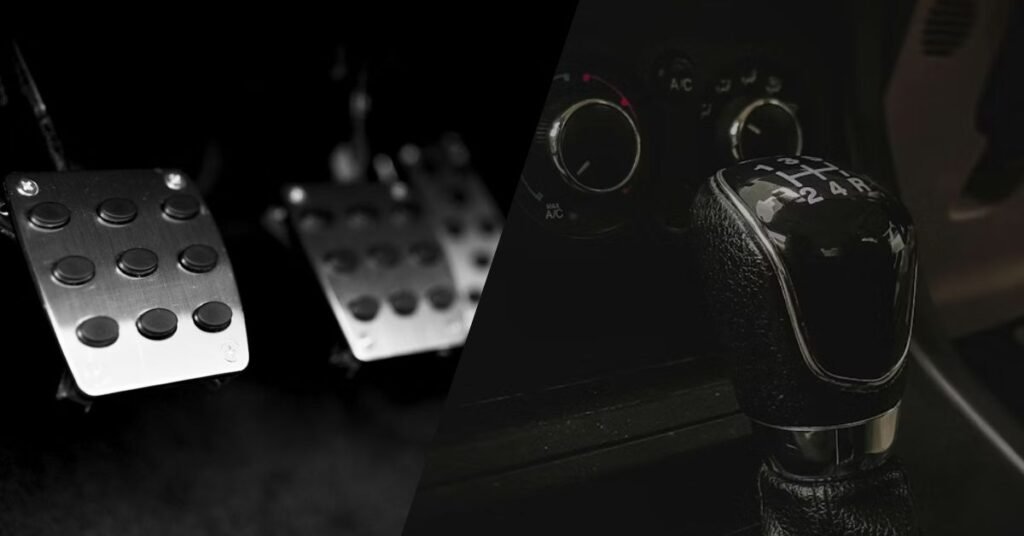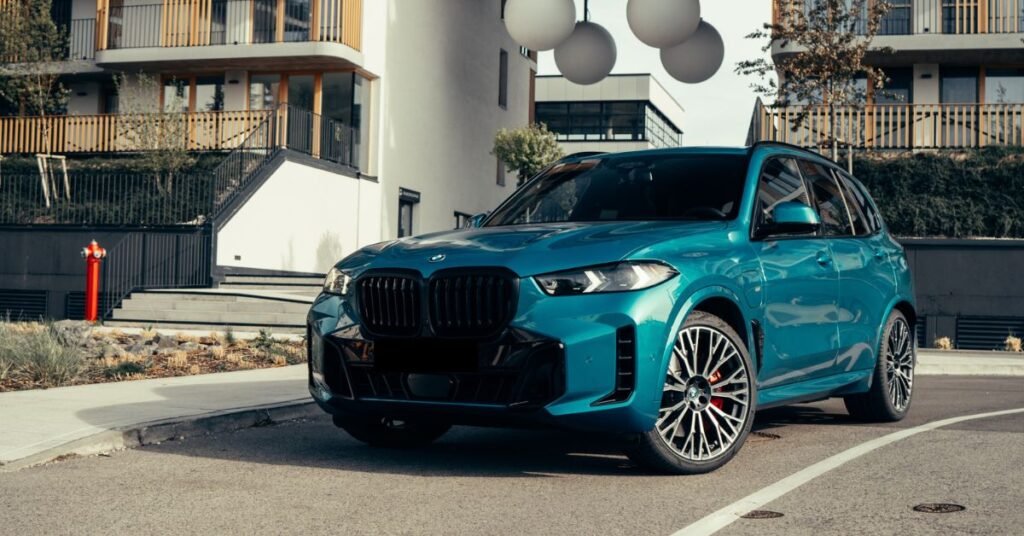
Double clutching is a manual transmission technique where the driver presses the clutch, shifts into neutral, releases the clutch to while i neutral blip the throttle to match the engine and transmission speeds, then presses the clutch again to smoothly engage the desired gear. It’s primarily used when downshifting and rev-matching in vehicles without modern synchronizers to prevent gear grinding and ensure a smooth shift.
What Is Double Clutching And Why Should You Do It?
This guide will break down the process of double clutching and, more importantly, explain why it’s necessary, particularly for vehicles without modern synchronizers. While the “why” can often be the most confusing part, we’ll demystify it for you.
Let’s start by walking through the practical steps of performing a double clutch.
The Double Clutch Process: Step-by-Step
Imagine you’re driving and need to downshift, say, from fourth gear to third and you want to use double clutching technique. Here’s the sequence of actions what you will do for double clutching:
- Lift off the Accelerator: First, take your foot off the gas pedal.
- Clutch In (First Press): Immediately press in the clutch pedal.
- Shift to Neutral: Pull the gear shifter out of your current gear (e.g., fourth) and place it into neutral.
- Clutch Out (First Release): Release the clutch pedal while the car is in neutral.
- Important Note: It’s crucial to understand that these first four steps aren’t a slow, tedious sequence. In practice, they often happen very quickly and smoothly, with significant overlap between actions. The goal is a fluid, rapid transition.
- Blip the Throttle (Rev Match): Since you’re downshifting, the engine speed needs to increase to match the rotational speed of the lower gear you’re about to engage. While the clutch is out and the car is in neutral, briefly “blip” the accelerator pedal to raise the engine RPMs.
- Sidenote: If you were upshifting (e.g., from 3rd to 4th), you would actually leave your foot off the gas in this step, allowing the engine speed to drop to match the higher gear’s lower rotational speed.
- Clutch In (Second Press): Once you’ve blipped the throttle and the engine speed is roughly matched to the intended gear, quickly press the clutch pedal in again.
- Shift to Target Gear: Now, smoothly engage your target gear (e.g., third gear).
- Clutch Out (Second Release): Finally, release the clutch pedal fully.
So in summary the process is:
CLUTCH IN
SHIFT TO NEUTRAL
CLUTCH OUT
THROTTLE BLIP
CLUTCH IN
DOWNSHIFT
CLUTCH OUT
Congratulations, you’ve successfully double clutched and can now continue driving in your new gear! This entire process, while sounding complex step-by-step, is executed as a very quick and smooth motion with practice.
Why Is Double Clutching Needed? Understanding Synchronizers
The primary reason double clutching exists is due to a component inside manual transmissions called synchronizers. To truly understand why double clutching is necessary, especially without them, let’s look at what’s happening inside the gearbox.
Imagine the inside of your transmission with several rotating parts:
- Engine & Flywheel: These are directly connected and always rotate together, and their speed is determined by your accelerator.
- Layshaft & Gears: Inside the transmission, a “layshaft” rotates based on the input from the engine (when the clutch is out). The individual gears (like 3rd and 4th gear) for each speed can rotate independently on bearings around the output shaft, but they are driven by the layshaft.
- Output Shaft & Collar: The output shaft ultimately sends power to your wheels, so its speed is tied to your wheel speed. A “collar” splined to the output shaft moves back and forth to engage the gears. When you select a gear, this collar slides over and “locks” to the chosen gear, effectively linking the gear’s speed to the output shaft’s speed.
The Problem Without Synchronizers:
When you shift gears without synchronizers, you have a crucial issue: the gear you want to engage (e.g., 3rd gear) is rotating at a different speed than the collar on the output shaft that needs to connect to it. If these speeds are not matched, trying to force the collar into the gear will result in grinding, wear, and a very rough, difficult shift.
How Double Clutching Solves the Problem:
Double clutching manually bridges this speed difference:
- First Clutch Press & Neutral: When you press the clutch in the first time and shift to neutral, you disconnect the engine from the transmission’s layshaft. Now, the layshaft and the individual gears are rotating freely, disconnected from the engine’s speed and the output shaft’s (wheel) speed.
- First Clutch Release & Blip: By releasing the clutch in neutral, you re-engage the engine with the layshaft and the gears that are free-spinning on the output shaft. Crucially, the collar on the output shaft is still rotating at wheel speed. Now, when you blip the throttle, you directly influence the rotational speed of the gears on the layshaft. Your goal is to bring the speed of the target gear (e.g., 3rd gear) as close as possible to the speed of the collar (which is matched to your wheel speed).
- Second Clutch Press & Gear Engagement: Once the speeds of the target gear and the collar are very close, you press the clutch in again. This brief disengagement minimizes the rotational mass of the engine influencing the final connection, allowing the collar to slide smoothly and effortlessly into the gear.
- Second Clutch Release: You release the clutch, and now everything (engine, transmission, wheels) is smoothly rotating together in the new gear.
The essence is that by double clutching, you are manually synchronizing the speeds of the gear you’re selecting with the output shaft, allowing for a smooth engagement.
Modern Manual Transmissions And The Role Of Synchronizers
Most modern manual transmissions in production cars today are equipped with synchronizers. These ingenious devices eliminate the need for double clutching for everyday driving.
When you shift a modern car:
- You release the gas and press the clutch.
- As you move the shifter towards the next gear, the synchronizer inside the transmission does the work for you. It’s essentially a friction cone that rotates and matches the speed of the target gear to the speed of the collar before the gear fully engages.
- Once the speeds are matched, the gear slides into place smoothly.
- Then, you can blip the throttle (for downshifts, to match engine speed to the now-engaged gear) and release the clutch for a smooth re-engagement.
The key benefit of synchronizers is that you don’t need to engage and disengage the clutch in neutral to match speeds – the transmission does it automatically as you push the shifter.
When is Double Clutching Useful?
Given that most modern cars have synchronizers, when would you actually need to double clutch?
- Older Vehicles Without Synchronizers: This technique is essential for driving vintage vehicles (like some older trucks or classic cars) that lack synchronizers.
- Worn Synchronizers: If a transmission’s synchronizers are heavily worn or completely failed, double clutching can provide a way to shift gears smoothly without grinding, effectively bypassing the damaged synchronizers by manually matching speeds. It’s a useful “bailout” technique if you don’t want to replace worn parts immediately.
- Heavy Duty / Race Applications: In some very heavy-duty trucks or specialized racing applications where synchronizers might not be present or can’t handle extreme forces, double clutching (or even non-synchronized “crash boxes”) might still be used.
While it’s not a technique you’ll likely use in your everyday modern car, understanding double clutching offers fascinating insight into the mechanics of manual transmissions and provides a valuable skill for those who appreciate the art of driving an older manual transmission car. With moderns manual transmission cars simple rev-matching when downshifting is just fine. Downshifting does not require additional clutch press and neutral selection – double clutching.


